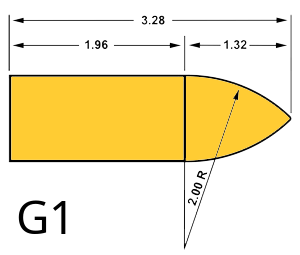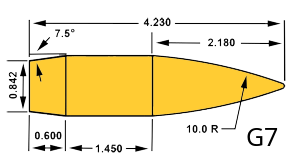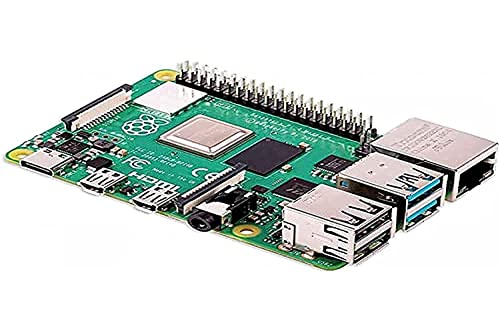G1 vs. G7 Ballistic Coefficients: What They Mean for Shooters and Why They Matter
If you’ve ever waded into the world of ballistics, handloading, or long-range shooting, you’ve probably come across the term ballistic coefficient (BC). This number appears on ammo boxes, bullet reloading manuals, and is a critical input in any ballistic calculator. But what exactly does it mean, and how do you make sense of terms like “G1” and “G7” when picking bullets or predicting trajectories?
In this comprehensive guide, we’ll demystify the science behind ballistic coefficients, explain why both the number and the model (G1 or G7) matter, and show you how this understanding can transform your long-range shooting game.
What Is Ballistic Coefficient (BC)?
At its core, ballistic coefficient is a measure of a bullet’s ability to overcome air resistance (drag) in flight. In simple terms, it tells you how “slippery” a bullet is as it flies through the air. The higher the BC, the better the projectile maintains its velocity and, with it, a flatter trajectory and greater resistance to wind drift.
But BC isn’t a magic number plucked out of thin air—it’s rooted in physics and relies on comparison to a standard projectile. Over a century ago, scientists and the military needed a way to compare bullet shapes, and so they developed “standard projectiles,” each with specific dimensions and aerodynamic qualities.
Enter: the G1 and G7 models.
Differing Mathematical Models and Bullet Ballistic Coefficients
Most ballistic mathematical models, whether found in printed tables or sophisticated ballistic software, assume that one specific drag function correctly describes the drag and, consequently, the flight characteristics of a bullet in relation to its ballistic coefficient. These models do not typically differentiate between varying bullet types, such as wadcutters, flat-based, spitzer, boat-tail, or very-low-drag bullets. Instead, they apply a single, invariable drag function as determined by the published BC, even though bullet shapes differ greatly.
To address these shape variations, several different drag curve models (also called drag functions) have been developed over time, each optimized for a standard projectile shape or type. Some of the most commonly encountered standard projectile drag models include:
- G1 or Ingalls: flat base, 2 caliber (blunt) nose ogive (the most widely used, especially in commercial ballistics)
- G2: Aberdeen J projectile
- G5: short 7.5° boat-tail, 6.19 calibers long tangent ogive
- G6: flat base, 6 calibers long secant ogive
- G7: long 7.5° boat-tail, 10 calibers secant ogive (preferred by some manufacturers for very-low-drag bullets)
- G8: flat base, 10 calibers long secant ogive
- GL: blunt lead nose
Because these standard projectile shapes are so different from one another, the BC value derived from a G_x_ curve (e.g., G1) will differ significantly from that derived from a G_y_ curve (e.g., G7) for the exact same bullet. This reality can be confusing for shooters who see different BCs reported for the same bullet by different sources or methods.
Major bullet manufacturers like Berger, Lapua, and Nosler publish both G1 and G7 BCs for their target, tactical, varmint, and hunting bullets, emphasizing the importance of matching the BC and the drag model to your specific projectile. Many of these values are updated and compiled in regularly published bullet databases available to shooters.
A key mathematical concept that comes into play here is the form factor (i). The form factor expresses how much a real bullet’s drag curve deviates from the applied reference projectile shape, quantifying aerodynamic efficiency. The reference projectile always has a form factor of exactly 1. If your bullet has a form factor less than 1, it has lower drag than the reference shape; a form factor greater than 1 suggests higher drag. Therefore, the form factor helps translate a real, modern projectile’s aerodynamics into the framework of the chosen drag model (G1, G7, etc.) for ballistic calculations.
It’s also important to note that the G1 model tends to yield higher BC values and is often favored in the sporting ammo industry for marketing purposes, even though G7 values can give more accurate predictions for modern, streamlined bullets.
To illustrate the performance implications, consider the following: - Wind drift calculations for rifle bullets of differing G1 BCs fired at a muzzle velocity of 2,950 ft/s (900 m/s) in a 10 mph crosswind: bullets with higher BCs will drift less. - Energy calculations for a 9.1 gram (140 grain) rifle bullet of differing G1 BCs, fired at 2,950 ft/s, show that higher BC bullets carry more energy farther downrange.
The G1 Ballistic Coefficient: The Classic Standard
What Is G1?
 The G1 standard, sometimes called the Ingalls model, after James M. Ingalls, was developed in the late 19th century. It’s based on an early bullet shape: a flat-based projectile with a two-caliber nose ogive (the curved front part). This flat-on-the-bottom design was common at the time, and so using this model made sense.
The G1 standard, sometimes called the Ingalls model, after James M. Ingalls, was developed in the late 19th century. It’s based on an early bullet shape: a flat-based projectile with a two-caliber nose ogive (the curved front part). This flat-on-the-bottom design was common at the time, and so using this model made sense.
When a manufacturer lists a G1 BC, they’re stating that their bullet loses velocity at the same rate as a hypothetical G1 bullet, given the BC shown.
How Is G1 BC Calculated?
Ballistic coefficient is, essentially, a ratio:
BC = (Sectional Density) / (Form Factor)
Sectional Density depends on the bullet’s weight and diameter. The form factor, as referenced above, measures how much more or less aerodynamic your bullet is compared to the standard G1 profile.
Problems with G1 in the Modern World
Most modern rifle bullets—especially those designed for long-range shooting—look nothing like the G1 shape. They have features like sleek, boat-tailed bases and more elongated noses, creating a mismatch that makes trajectory predictions less accurate when using G1 BCs for these modern bullets.
The G7 Ballistic Coefficient: Designed for the Modern Era
What Makes the G7 Different?

The G7 model was developed with aerodynamics in mind. Its reference bullet has a long, 7.5-degree boat-tail and a 10-caliber secant ogive. These characteristics make the G7 shape far more representative of modern match and very-low-drag bullets.
How the G7 Model Improves Accuracy
Because its drag curve matches modern, boat-tailed bullets much more closely, the G7 BC changes much less with velocity than the G1 BC does. This consistency ensures trajectory predictions and wind drift calculations are accurate at all ranges—especially beyond 600 yards, where small errors can become critical.
Breaking Down the Key Differences
Let’s distill the core differences and why they matter for shooters:
1. Shape Representation
- G1: Matches flat-based, round-nosed or pointed bullets—think late 19th and early 20th-century military and hunting rounds.
- G7: Mirrors modern low-drag, boat-tailed rifle bullets designed for supreme downrange performance.
2. Consistency & Accuracy (Especially at Long Range)
G1 BCs tend to fluctuate greatly with changes in velocity because their assumed drag curve does not always fit modern bullet shapes. G7 BCs provide a much steadier match over a wide range of velocities, making them better for drop and wind drift predictions at distance.
3. Practical Application in Ballistic Calculators
Many online calculators and ballistic apps let you select your BC model. For older flat-based bullets, use G1. For virtually every long-range, VLD, or match bullet sold today, G7 is the better option.
4. Number Differences
G1 BC numbers are always higher than G7 BC numbers for the same bullet due to the underlying mathematical models. For example, a bullet might have a G1 BC of 0.540 and a G7 BC of 0.270. Don’t compare them directly—always compare like to like, and choose the right model for your bullet type.
The Transient Nature of Bullet Ballistic Coefficients
It’s important to recognize that BCs are not fixed, unchanging numbers. Variations in published BC claims for the same projectile often arise from differences in the ambient air density used in the calculations or from differing range-speed measurement methods. BC values inevitably change during a projectile’s flight because of changing velocities and drag regimes. When you see a BC quoted, remember it is always an average, typically over a particular range and speed window.
In fact, knowing how a BC was determined can be nearly as important as knowing the value itself. Ideally, for maximum precision, BCs (or, scientifically, drag coefficients) should be established using Doppler radar measurements. While such equipment, like the Weibel 1000e or Infinition BR-1001 Doppler radars, is used by military, government, and some manufacturers, it’s generally out of reach for most hobbyists and reloaders. Most shooters rely on data provided by bullet companies or independent testers for their calculations.
Why Picking the Right BC Model Matters
Accurate trajectory data is the lifeblood of successful long-range shooting—hunters and competitive shooters alike rely on it to hit targets the size of a dinner plate (or much smaller!) at distances of 800, 1000, or even 1500 yards.
If you’re using the wrong BC model: - Your predicted drop and wind drift may be wrong. For instance, a G1 BC might tell you you’ll have 48 inches of drop at 800 yards, but in reality, it could be 55 inches. - You’ll experience missed shots and wasted ammo. At long range, even a small error can mean feet of miss instead of inches. - Frustration and confusion can arise. Is it your rifle, your skill, or your data? Sometimes it’s simply the wrong BC or drag model at play.
Real-World Example
Let’s say you’re loading a modern 6.5mm 140-grain match bullet, which the manufacturer specifies as having:
- G1 BC: 0.610
- G7 BC: 0.305
If you use the G1 BC in a ballistic calculator for your 1000-yard shot, you’ll get a certain drop and wind drift figure. But because the G1 model’s drag curve diverges from what your bullet actually does at that velocity, your dope (the scope adjustment you make) could be off by several clicks—enough to turn a hit into a miss.
If you plug in the G7 BC and set the calculator to use the G7 drag model, you’re much more likely to land your shot exactly where expected.
How to Choose and Use BCs in the Real World
Step 1: Pick the Model That Matches Your Bullet
Check your bullet box or the manufacturer’s site: - Flat-based, traditional shape? Use G1 BC. - Boat-tailed, modern “high BC” bullet? Use G7 BC.
Step 2: Use the Right BC in Your Calculator
Most ballistic calculators let you choose G1 or G7. Make sure the number and the drag model match.
Step 3: Don’t Get Hung Up on the Size of the Number
A higher G1 BC does not mean “better” compared to a G7 BC. They’re different scales. Compare G1 to G1, or G7 to G7—never across.
Step 4: Beware of “Marketing BCs”
Some manufacturers, in an effort to one-up the competition, will only list G1 BCs even for very streamlined bullets. This is because the G1 BC number looks bigger and is easier to market. Savvy shooters know to look for the G7 number—or, better yet, for independently verified, Doppler radar-measured data.
Step 5: Validate with the Real World
Shoot your rifle and check your true trajectory against the numbers in your calculator. Adjust as needed. Starting with the correct ballistic model will get you much closer to perfection right away.
The Bottom Line
Ballistic coefficients are more than just numbers—they’re a language that helps shooters translate bullet shape and performance into real-world hit probability. By understanding G1 vs G7:
- You’ll choose the right BC for your bullet.
- You’ll input accurate information into your calculators.
- You’ll get on target faster, with fewer misses and wasted shots—especially at long range.
In a sport or discipline where fractions of an inch can mean the difference between a hit and a miss, being armed with the right knowledge is just as vital as having the best rifle or bullet. For today’s long-range shooter, that means picking—and using—the right ballistic coefficient every time you hit the range or the field.
Interested in digging deeper? Many bullet manufacturers now list both G1 and G7 BCs on their websites and packaging. Spend a few minutes researching your chosen projectile before shooting, and you’ll see the benefits where it counts: downrange accuracy and shooter confidence.
Happy shooting—and may your shots fly true!
